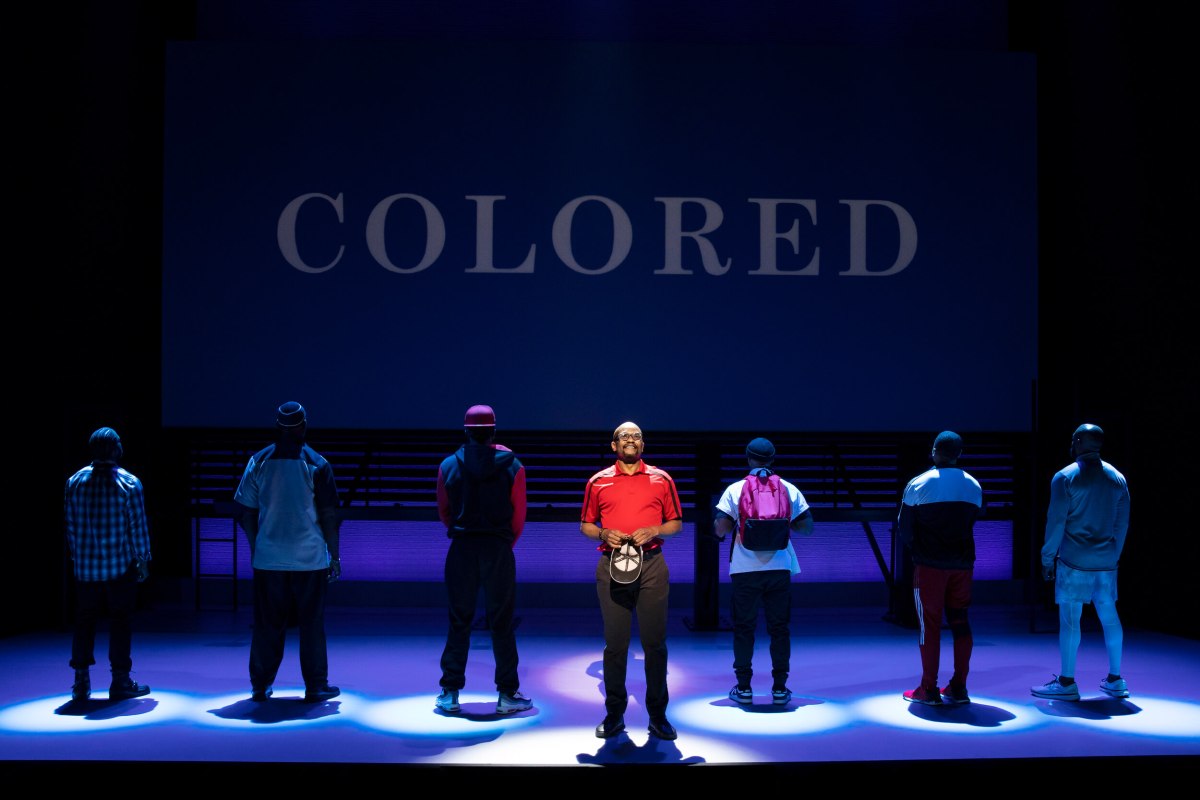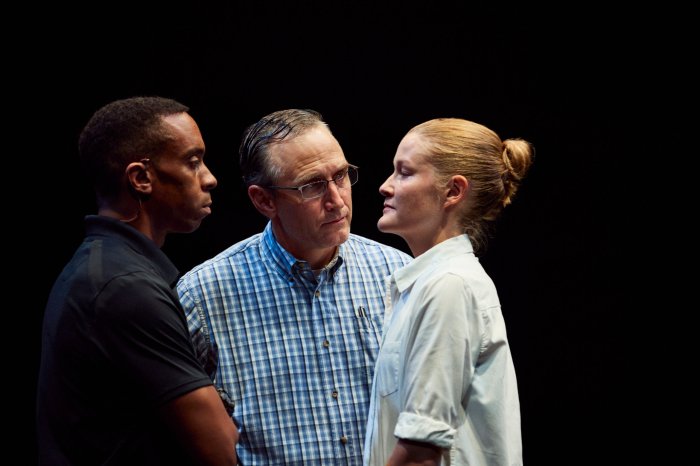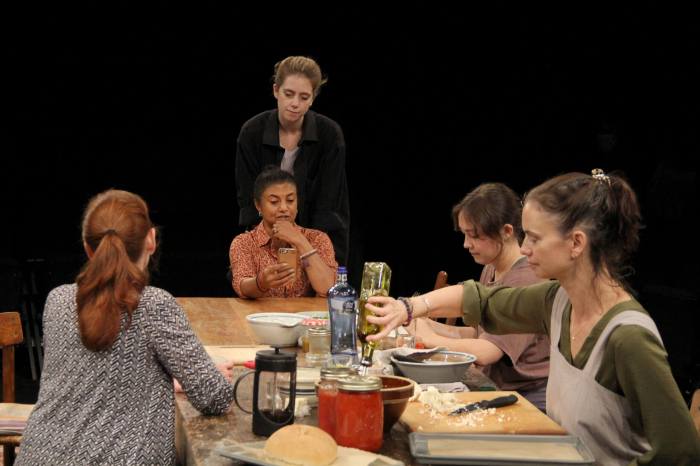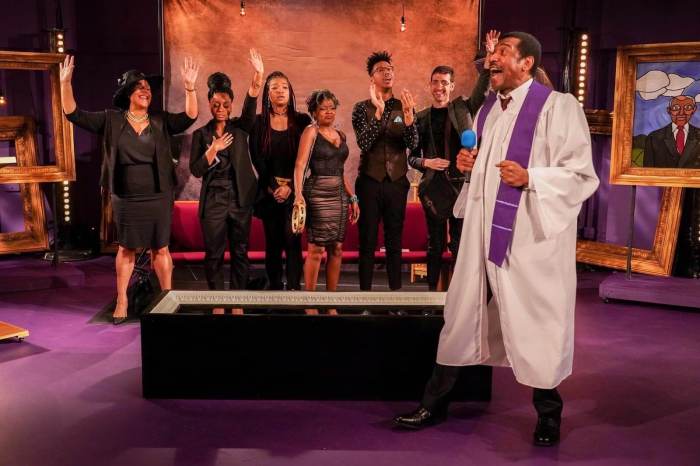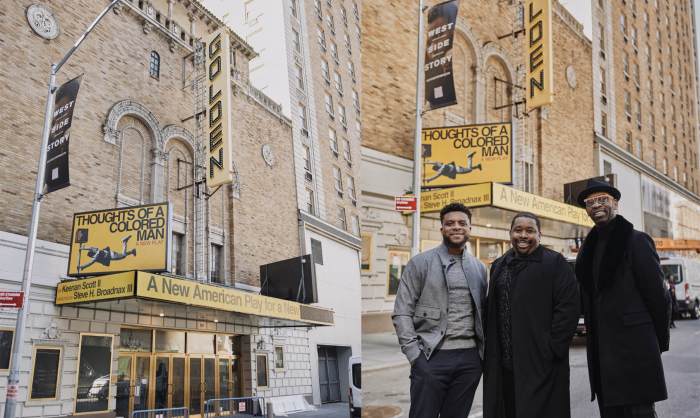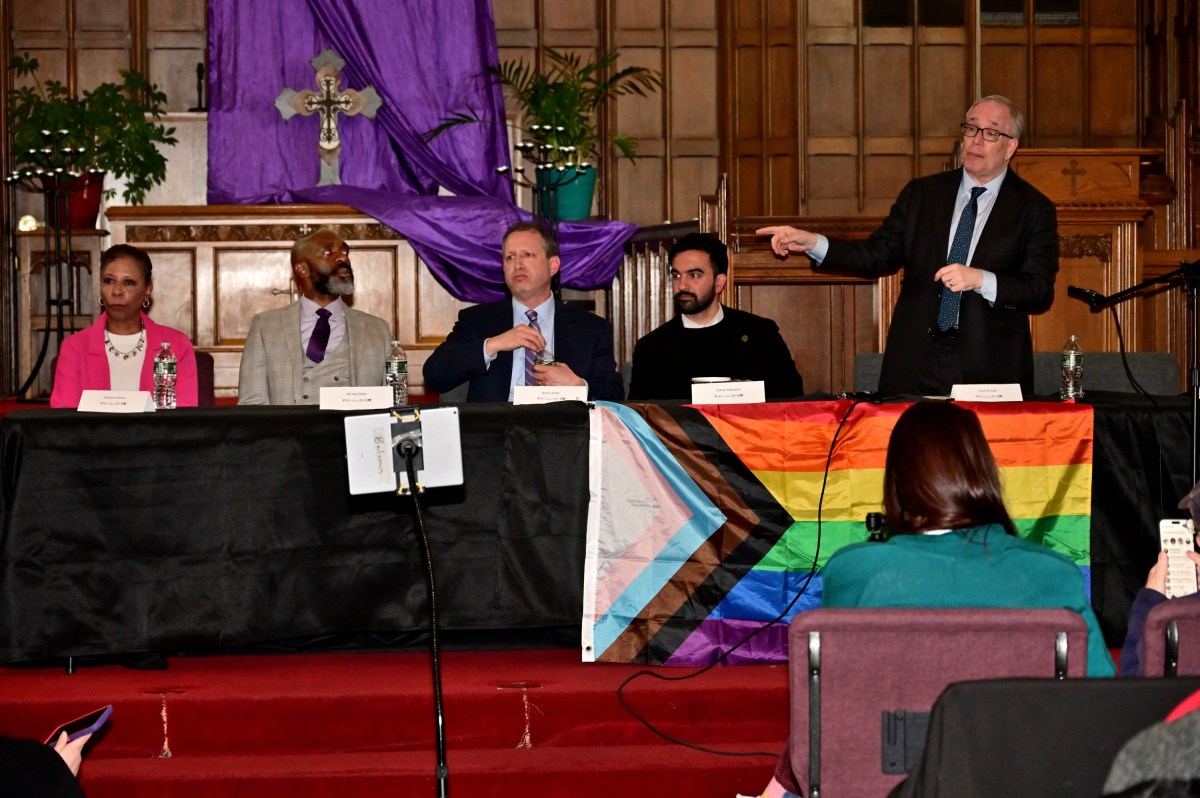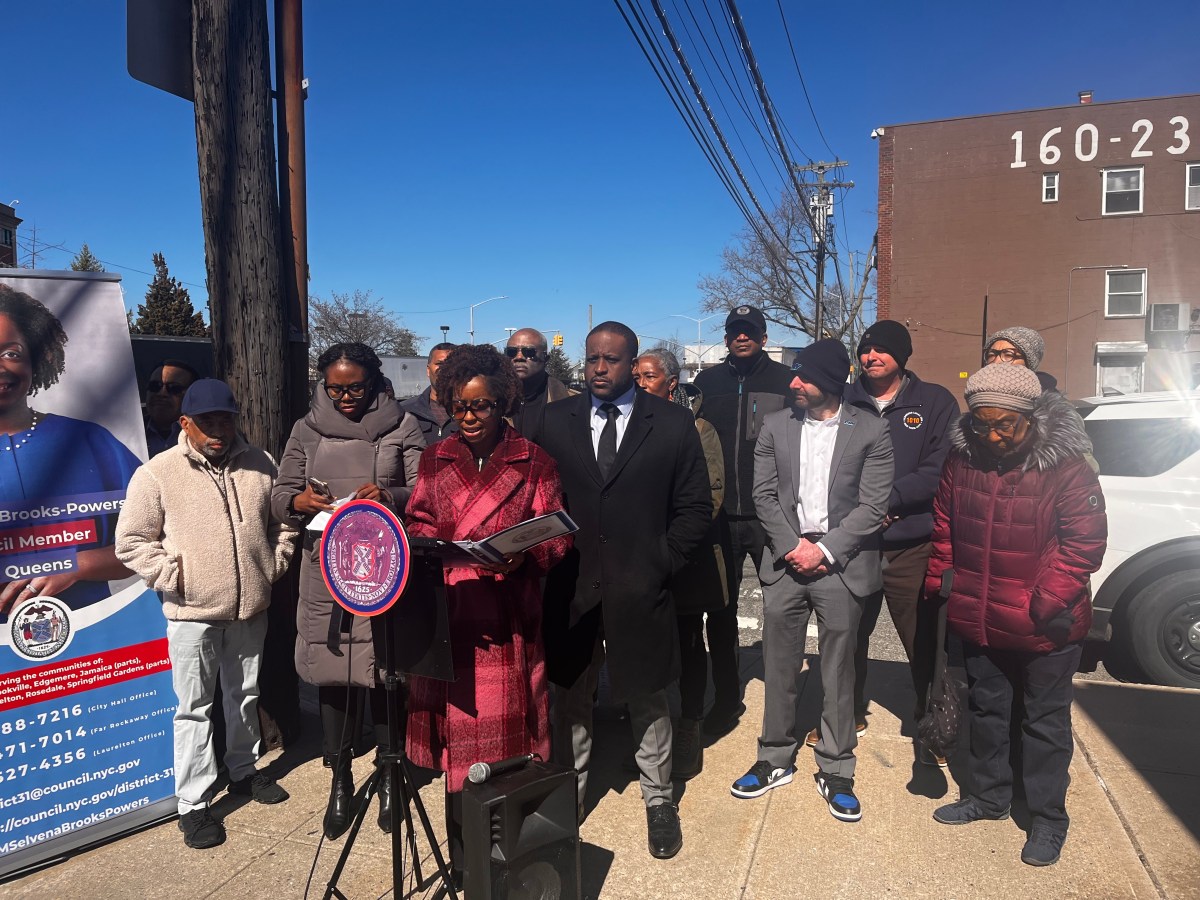If any one play comes to represent the current Broadway season’s remarkable renaissance of new works by Black writers, it will probably be Keenan Scott II’s soul-searching, rhythmically-driven, and widely-accessible drama “Thoughts of a Colored Man,” which was produced in Syracuse and Baltimore prior to the pandemic.
One of the most encouraging and forward-looking moments for the theater industry during the pandemic occurred when the “Thoughts of a Colored Man” marquee was installed at the Golden Theatre in March, even though the reopening of Broadway remained unclear and unknown at the time.
The play is composed of interwoven scenes and confessional monologues involving seven Black men of different ages, backgrounds, and personalities over the course of a single day in a contemporary Brooklyn neighborhood.
The men are each named for a defining character trait: Love (Dyllón Burnside), Happiness (Bryan Terrell Clark), Wisdom (Esau Pritchett), Lust (Da’ Vinchi), Passion (Luke James), Depression (Forrest McClendon), and Anger (Tristan Mack Wilds). But despite their archetypal natures, the characters are not simple stereotypes. Scott goes to great lengths to richly define each of them, including their past and present circumstances, dreams and downfalls.
For instance, Happiness is a gay finance exec who lives with his partner and puppy in a new condo building and feels disconnected from the Black community, Depression is an engineering prodigy who gave up a scholarship to MIT in order to take care of his sick mother and now earns minimum wage at Whole Foods, and Anger is a basketball coach whose professional athletic prospects were shattered by a knee injury.
Before attending, I wondered why the word “colored” is used in the title as opposed to Black or African-American. I suspected that Scott was paying homage to Notzake Shange’s 1976 ensemble drama “For Colored Girls…” which is also composed of poetic monologues. However, based on the text, “colored” actually has a surprise meaning, referring to the characters’ multidimensionality rather than their skin color.
While Black identity, gentrification, and connection to the past are primary topics of concern and debate, Scott also explores the exploitation of student athletes, police brutality, systemic racism, consumerism, the projects, drugs, and gun violence – while also managing to sneak in some humor.
Scott’s language often takes on a poetic flavor and fervor. During the prologue, Depression notes how their ancestors “wanted us to live amongst the stars they charted for us. So why have we settled for the dim light of the moon and not bask in the sun?”
Under the smooth direction of Steve H. Broadnax III, each member of the seven member cast has standout moments (especially Clark and McClendon) while also contributing to a vibrant unified ensemble.



